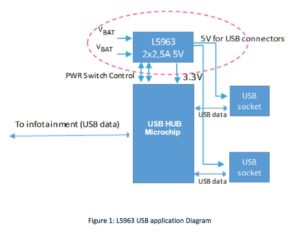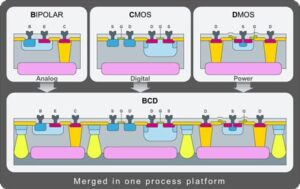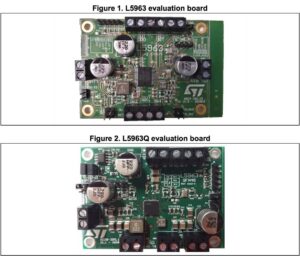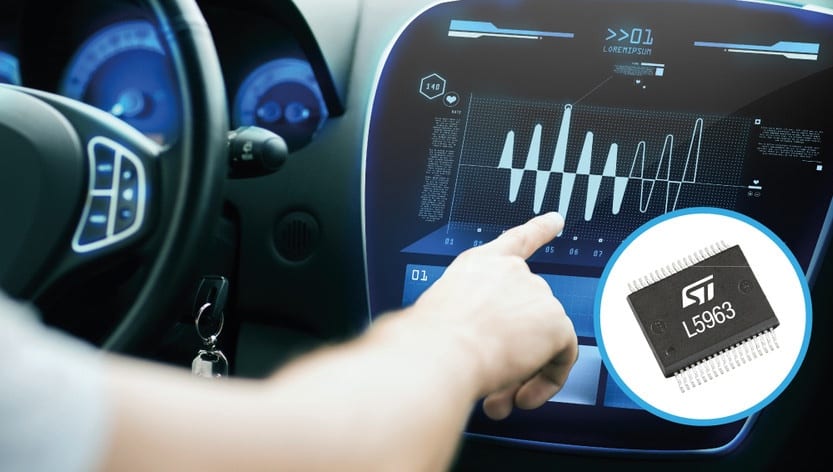USB ports are now an integral part of any automobile’s interior, and the L5963 regulator plays an immense role by enabling smaller, and more efficient designs, while preventing interference. Today, the USB controller manages ports used for charging devices, and handles data transfers to and from the infotainment unit. After all, as cars integrate systems that look more and more like PCs, and connectivity with mobile devices is paramount, the presence of multiple USB ports and hubs is no longer an option, but a must-have feature.
L5963 : A Simple Solution to Complex Problems

However, the constraints inherent to the automobile make powering USB ports a challenge. Because the energy comes from the battery, the system must deal with high current fluctuations and voltage spikes. It must also tolerate very harsh and widely different environments, and keep electromagnetic interference to a minimum. Hence, powering USB ports and hubs requires a lot of different components, from several suppliers, unless you use the L5963.
The beauty of the L5963 resides in its ability to take all this complexity, and offer a single package device that takes care of everything, from the time the current leaves the battery, to the time it reaches the USB ports or hub. It includes two step-down-synchronous switching regulators with internal power switches, one high-side driver (HSD), and one low drop-out (LDO) linear regulator.
The L5963 also includes a programmable under-voltage battery detector, a load dump protector to guard against transient voltage (40 V), and all the outputs have independent thermal protection and current limitation to guarantee reliable operation over a very long lifetime. Given its years of experience developing a wide range of CAN Bus protectors, and simulators for circuits protecting against electrostatic discharges, among many other things, it is not surprising to see ST tackle this complex problem with one of the most efficient solutions on the market.
Simpler Is Better

The most obvious advantage of the L5963 is that it reduces the number of components needed, and the size of the board required, to power the USB ports and hubs. As a result, designs get simpler, cheaper, more efficient and more reliable. For instance, because all the regulators have independent supply pins, you can connect one of the switching regulators to the battery to use it as a pre-regulator, then connect its output to the other regulators to use them as post-regulators, which greatly increases flexibility, without the need for external ICs. For instance, it becomes possible to simultaneously provide the USB ports with 5 V, to optimize charging, while the LDO provides the hub with the 3.3 V it needs.
ST is uniquely positioned to create such a solution, because it uses a special 180 nm process node called BCD8 (Bipolar CMOS DMOS), developed in-house, which enables the integration of analog, digital, and power circuits, into one chip. Furthermore, it also allows the L5963 to combine low-voltage (1 V) and high-voltage (40 V) components under one roof. The technology uses specific metal layers, as well as deep isolation trenches through the wafer (in yellow in the diagram on the right), to ensure there are no current leakage between devices, and that each is properly isolated, to reduce interference.
Interferences Alleviation and Design Choices in the L5963

As we have seen, adding multiple switching regulators has many advantages, but an unwanted consequence of such a design is the increase in electromagnetic interference (EMI). Using more than one of these regulators increases noise, and can potentially hinder performance. To solve this, the L5963 includes a pulse-width modulator (PWM) that ensures the two switching regulators have a phase shift of 180º, which reduces noise by making sure emissions aren’t identical, and therefore don’t build on each other.
ST also included an extremely flexible frequency management system. As is, the switching regulators can function at a free run frequency of 250 kHz, which will offer amazing efficiency, which is important at high loads. The L5963 also offers the ability to connect an external oscillator to synchronize the regulators to a frequency of up to 2 MHz, which permits use of smaller inductors. The downside is that it lowers efficiency. To find the right compromise, it is also possible to have the second regulator work at 1/2, 1/4th or 1/8th the frequency of the first channel. Hence, the level of granularity available can bring a lot of optimizations to the final design.
To help engineers start experimenting with the L5963, ST has come up with two evaluation boards, the EVAL-L5963 and EVAL-L5963Q, which are identical except for the main chip’s packaging. Already available in major resellers, they can shorten development times, and simplify experimentations, as well as optimization operations.
